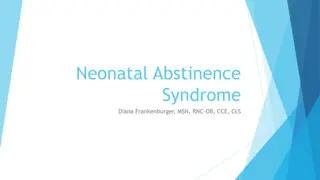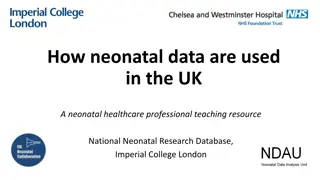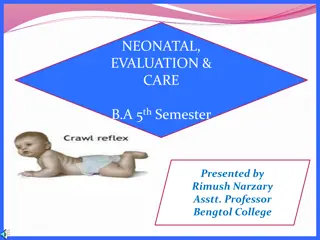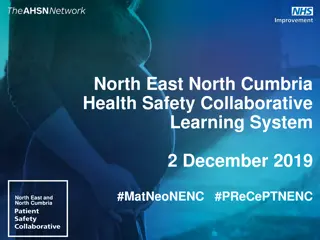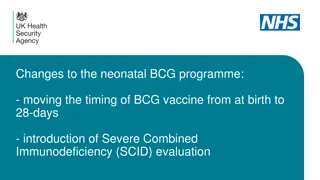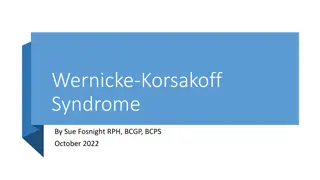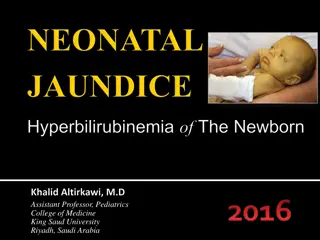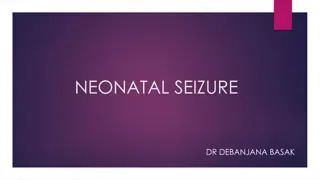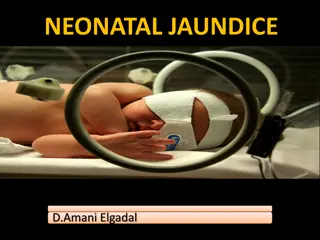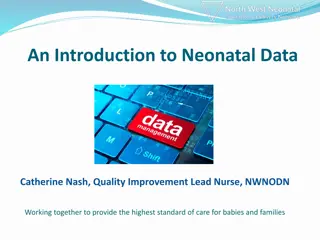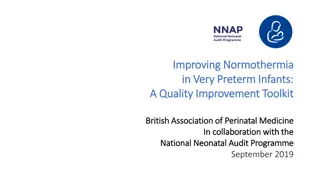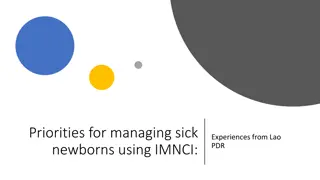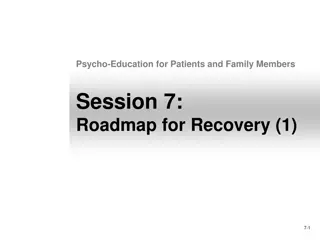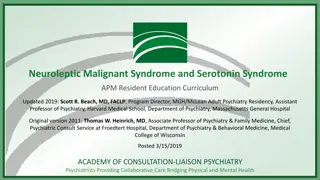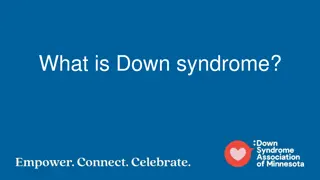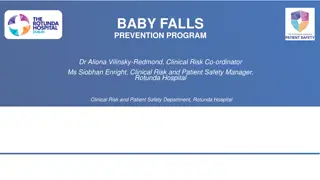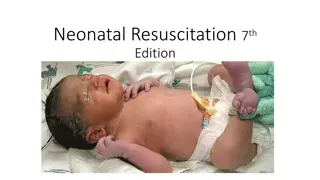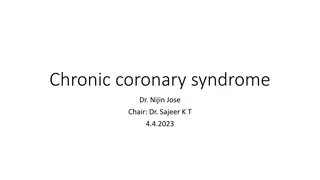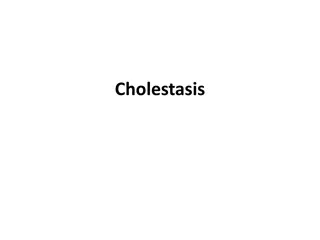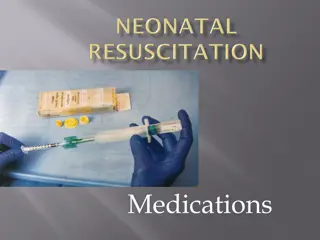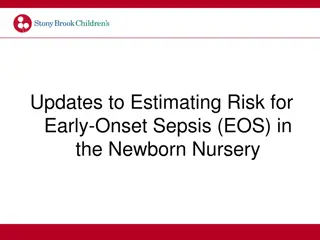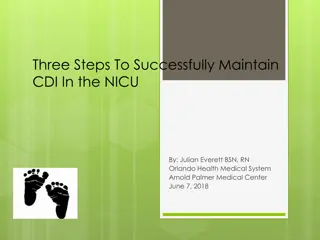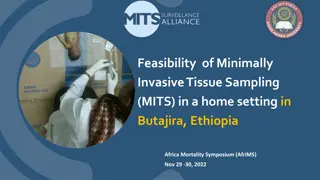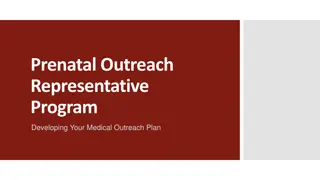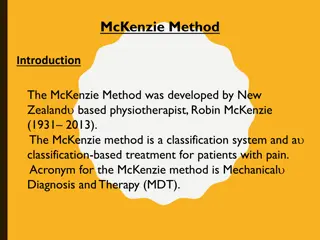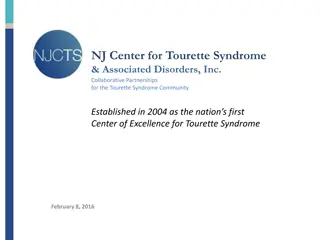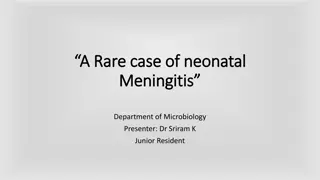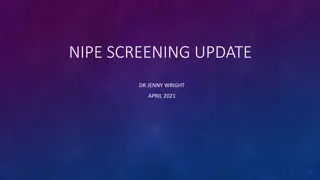Understanding Neonatal Abstinence Syndrome: A Guide for Parents
Babies exposed to methadone or buprenorphine during pregnancy may develop Neonatal Abstinence Syndrome (NAS), which can lead to various Central Nervous System, Autonomic Nervous System, and gastrointestinal issues. Symptoms usually peak between the 3rd and 4th day of life and may require monitoring and treatment. It's crucial to understand what to expect and how to care for a baby experiencing NAS.
Download Presentation

Please find below an Image/Link to download the presentation.
The content on the website is provided AS IS for your information and personal use only. It may not be sold, licensed, or shared on other websites without obtaining consent from the author. Download presentation by click this link. If you encounter any issues during the download, it is possible that the publisher has removed the file from their server.
E N D
Presentation Transcript
CARING FOR BABIES EXPOSED TO METHADONE OR BUPRENORPHINE DURING PREGNANCY Bonny Whalen, MD Medical Director / Newborn Pediatrician CHaD/DHMC Newborn Nursery
YOUR BABY AND SUBUTEX OR METHADONE What have you heard? What are you worried about?
NEONATAL ABSTINENCE SYNDROME (NAS) Caused by withdrawal from opiates / opioids Problems with over-function of the: Central Nervous System (CNS) - Brain, nerves, muscles Autonomic Nervous System - Breathing, blood vessels, metabolism GI tract /intestines - Feeding, vomiting, stooling
PROBLEMS WITH THE CENTRAL NERVOUS SYSTEM Increased crying / problems consoling Problems sleeping Overactive startle reflex Tremors / jitteriness Increased muscle tone Myoclonic jerks Seizures
PROBLEMS WITH THE AUTONOMIC NERVOUS SYSTEM Fever Sweating Yawning Mottling Nasal stuffiness Sneezing Problems breathing / Increased work of breathing Nasal flaring Tachypnea Retractions (pulling in between ribs)
PROBLEMS WITH THE GI TRACT Excessive sucking Poor feeding Spitting up / vomiting Loose stools Watery stools
NAS: WHAT TO EXPECT ~ (or more) infants will develop some signs of NAS Symptoms start on 2ndday & most often peak on 3rdto 4thday of life Symptoms may be worse or seen earlier if mother is: Smoking cigarettes, on some medications for depression or anxiety, or using other substances Baby will need to be monitored for at least 4 days, and longer if still having NAS symptoms and hasn t peaked yet
NAS: WHAT TO EXPECT If treatment with medicine is required, length of time for treatment and observation off of treatment can vary from one to several weeks No relationship between dose of mother s medicine and how severe NAS is or how long treatment is needed for baby It is best to not try to wean medicine during pregnancy due to risk of relapse for mother, and risk of withdrawal for the fetus
NAS ASSESSMENTS Help baby calm first before assessment Put baby skin-to-skin before assessment Feed baby first, then call RN to come in and do assessment Have baby on you doing skin-to-skin during assessment if possible Keep track of baby s eating, sleeping, and consoling (comforting) using the Newborn Care Diary Review Diary with your baby s providers
HELPING YOUR BABYWITH NAS You are your baby s first and most important treatment Most babies can be cared for with your Tender Loving Care (TLC) alone If your baby has very intense NAS symptoms, she may need medicine (like morphine) to help her
DECIDING WHEN MEDICINEIS NEEDED Baby may need treatment: Problems Eating, Sleeping, or Consoling (Comforting) Having hard time breathing Vomiting and losing too much weight Baby needs treatment: Apnea or seizures (very unlikely) Unable to eat, sleep for at least one hour, or console despite optimal supportive (non-pharm) care measures
ROOMING-IN Keep your baby with you in your room at all times You can respond to your baby s feeding and stress cues earlier You can keep your room calmer / quieter than out in the Nursery Helps you feel more comfortable caring for your baby when you go home If you need to go get your medicine or leave your baby s room, have a family member or friend take care of your baby in your room If you need extra help, we have a Cuddler Program that can help provide extra support!
HELPCOMFORT / CALMYOURBABY Feed your baby at early feeding cues, until content Hold your baby close to you in skin-to-skin contact (when you are not sleepy) Breastfeed your baby Talk or sing to your baby Swaddle your baby in a thin blanket (keep top of blanket away from face) Gently sway or jiggle your baby (with slow up & down movements) Use a shooshing noise Have your baby suck on a finger or pacifier (when not hungry)
SUPPORTIVE CARE FOR NEWBORNS Provide undisturbed periods of sleep / rest Cluster care Keep the room very calm Low lights Quiet room Limit visitors / # caregivers Avoid excessive handling of baby Introduce increased noise and touch when baby is able to tolerate Infant touch / massage
BREASTFEEDING AND YOUR MEDICATIONS Breastfed infants may experience less severe NAS symptoms Breastfeeding is one of the best things you can do for your baby. It helps your baby fight off infections and helps with his / her long-term health. It also helps you! Methadone and buprenorphine are safe in breastfeeding Do not use illegal substances (including marijuana) or medications not prescribed to you during breastfeeding
TRICKS AND TIPS FOR BREASTFEEDING Breastfeed in a calm environment Breastfeed baby when hungry, till content Do lots of skin-to-skin Breastfeed in C-hold (football, cross cradle positions) Use hand expression to help baby get milk If baby having problems with withdrawal (NAS), have baby suck on your finger first to organize suck Nurses and Lactation Consultants will help if having problems
WAYSTOHELPYOURBABYDOBEST! Attend all of your prenatal visits Take your medication as prescribed Stop using nicotine Do not use marijuana or other drugs Breastfeed your baby Comfort your baby with skin-to-skin contact Stay with your baby in a calm, quiet environment If you follow these steps, your baby has a less than 10% chance of having NAS symptoms that need medicine
IN-HOSPITAL DRUG TESTING Mother: Urine testing Baby: Umbilical cord testing Urine testing if mother s urine not obtained on admission Meconium testing if mother given medication during labor (example: morphine) that may have been taken illegally during pregnancy
IN-HOSPITAL CARE COORDINATION Care management team = Social worker and case manager Performs initial assessment of mother and baby Reviews risk for postpartum depression and stress & helps identify supports and ways to cope Performs mandated report to DCF/DCYF per state / federal requirements Helps develop Safe Plan of Care & shares with DCF/DCYF before discharge Assists in identifying and arranging supports for home: VNA (Visiting Nurse): Follow-up in home 1-2 days after discharge Early Intervention (EI) referral for helping with baby s development Good Beginnings volunteer program Breast pump assistance Can help identify Primary Care Physician (PCP),if needed
BABY IS READY FOR DISCHARGE: Stable vital signs No breathing problems No significant problems with withdrawal (NAS) after 4 - 5 day observation period Eating, Sleeping, Consoling well with normal weight loss Parents comfortable and confident in caring for baby No concerns for safety of baby after discharge Referrals to community resources in place Follow up appointments made with PCP & VNA for 1 and 2 days after discharge
DOINGTHEMOSTYOUCANDURINGYOUR PREGNANCY / AFTERTHEBIRTH Do not use illicit / illegal drugs during and/or after your pregnancy Accept and find as many social supports as you can Stop smoking (or at least cut down as much as you can) Plan to breastfeed your baby and find friends / family who can help support you Find friends / family who can help take care of your other children (and animals) while you are in the hospital and for your first few days weeks at home (also see if they can help you cook and clean!)
DOINGTHEMOSTYOUCANDURINGYOUR PREGNANCY / AFTERTHEBIRTH Plan to stay in the hospital for at least 4 - 5 days for monitoring but also make plans to stay in hospital at least 2 weeks in case your baby needs treatment Plan to have someone stay in the hospital with you all the time (can be one person or different people) Room-in with your baby at all times or have someone who can if you need to leave for any reason Do lots of skin-to-skin with your baby Be open-minded and take everyone s advice when it comes to skin-to skin contact. Both my husband and I did it for the first three months. There is no better way to bond when paired with breastfeeding!
DOINGTHEMOSTYOUCANDURINGYOUR PREGNANCY / AFTERTHEBIRTH Provide a really calm environment for your baby Plan to limit visitors in the first few days - weeks Talk to your family and friends about your medication and why your baby needs to be watched closely / might need to be in hospital that long Ask for a cuddler if you would like help comforting your baby while you sleep, go for a walk, etc. Share feedback on what we are doing well and ways we can improve Plan to have VNA come see your baby 1-2 days after baby goes home Plan to see baby s PCP 1-2 days after baby goes home
TIPSFROMOTHERMOMS To relax, not worry too much. Know your baby. Don t listen to horror stories from other moms. Get the facts and ask questions from people you trust. To know about NAS and know what to look for. Use the symptom diary. Ask for your baby to be scored while on you skin- to-skin. Share information with your husband or partner so he knows what to expect and look for too.
COMMUNITY RESOURCES Information and Referral NH Resource 211 802-652-4636 VT Resource 211 866-444-4211 Support/Home-based programs (e.g., VNA, Good Beginnings, Parenting Programs) Health and Mental Health / Treatment Programs Child Protective Services Domestic/Family Violence Housing Emergency Financial Assistance Legal Assistance Transportation Long-term follow-up programs / interventions (e.g., Early Intervention)


